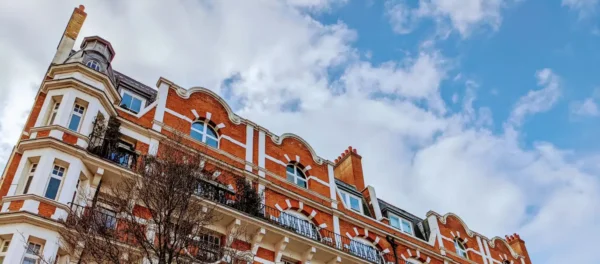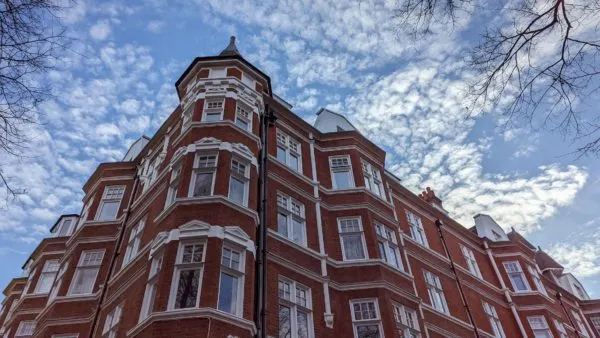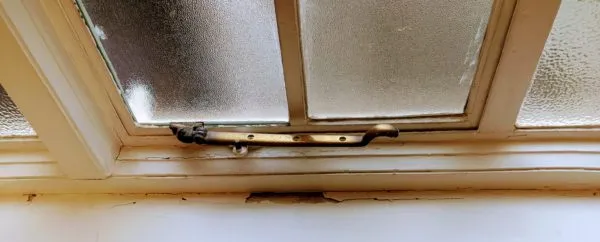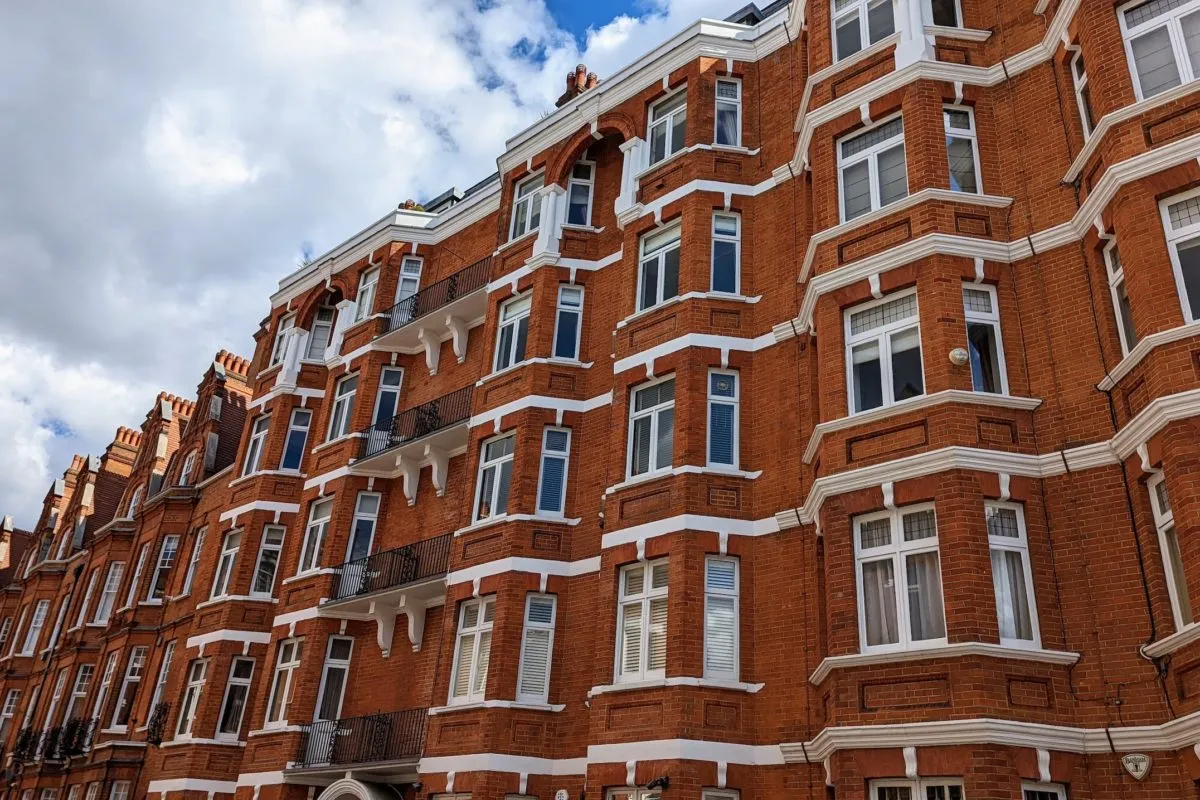London mansion blocks’ imposing red-brick facades are an iconic part of the city’s streetscape. They are the closest equivalent to Paris’ more common Haussmann blocks and bring a gentle density to their neighbourhoods.
While they can look fantastic from afar, the reality of living in one in the 21st century can be very different.
A brief history
Mansion blocks were intended to destigmatize apartment living and tempt wealthier Victorians away from cramped terraced housing. To achieve this, their designs borrowed elements from grand houses of the day such as large bay windows and high ceilings.
One of the earliest notable examples was Kensington’s Albert Hall Mansions, completed in the 1870s. Although its sheer size was controversial, it became a commercial success kickstarting a wave of similar developments across the city.
Later art deco examples are more utilitarian. For instance, Pimlico’s Dolphin Square has more modest proportions and layouts designed without house staff in mind.
Mansion blocks have left a strong legacy. Many architects and planners argue new London developments need to be built at a similar scale to limit urban sprawl and create a similar urban density to most European cities.

Pros of a mansion block
Purpose built flats.
As purpose built flats, they tend not to suffer from narrow layouts commonly found in converted flats.
Mansion flats typically have large rooms, high ceilings and ample natural light. Lateral layouts make efficient use of space. A 150m² mansion block flat usually feels more spacious than a terraced house of the same size.
Amenities
Larger mansion blocks often have a day porter to help keep the building secure and manage deliveries and tradesmen.
Some developments also have communal gardens, tennis courts or swimming pools.
Location
Mansion flats were initially built in some of the city’s most desirable areas such as Chelsea and South Kensington which remain in high demand today.

Cons of a mansion block
Poor Sound Insulation
This is perhaps the most common complaint. In the worst cases, residents complain about overhearing every word of neighbours’ conversations.
Awkward Kitchen Locations
The original kitchens were designed to be used by house staff. This means they can be on the small side and are often situated as far as possible from the main living areas.
Relocating a kitchen in a modern mansion flat is not a simple task due to the required permissions and plumbing changes.
High Service Charges
Depending on the size of the flat and level of amenity service charges can range from £3,000 – £15,000 p.a. High service charges do not necessarily mean a well-run and presented building and can limit capital growth.
Dated Building Techniques
While mansion blocks were built during what was arguably London’s golden architectural age, they are nevertheless old buildings which can’t always be easily improved due to planning regulations.
Some blocks have communal heating and water systems which aren’t well suited to modern living. Water pressure can be poor, especially if you are showering at 8am when the system is under heavy use. There are even horror stories of communal water tanks having legionella preventing the entire building from using it for a month.
Another common complaint are single-paned windows which no longer align well with the frames causing heat and sound insulation issues. Unfortunately some buildings are listed and it is not currently possible to install double-glazed windows.

A poorly aligned, single paned window in a flat with service charges in excess of £5,000 p.a.
The majority of mansion blocks also have dated communal areas. We have viewed in mansion blocks in the heart of Marylebone where the the lifts are out of order, carpets are from the 1980s and the original block wooden flooring is dilapidated.
What should I pay attention to at viewings?
When viewing a mansion block flat don’t overly focus on the flat itself. It’s just as important to get a sense of the lifecycle of the whole building.
How dated are the communal areas? When were the windows last replaced? How old is the roof? Does the brickwork need repointing? What are the current reserve funds? Are any major works planned and have any Section 20 notices been served?
Each building will tell its own story of prudent investment or decades of mismanagement. On one occasion we were retained to handle negotiations of a flat in one of London’s most iconic mansion blocks. After viewing and researching the management company, it became clear the block’s finances were in dire straits. We advised the client against offering at all.
If you are preparing to offer, view in the early evening when others are returning from work to get a better sense of the sound insulation.

Are they hard to renovate?
Due to the number of parties involved (neighbours, the freeholder, management company) and subsequent permissions required, renovating a mansion flat is not straightforward. However it can produce spectacular results and create a living space unachievable in other building types.
It is vital you work with an architect and contractor experienced in renovating mansion blocks. They should know how to take advantage of the design – e.g. making use of generous ceiling heights to raise flooring and create new pathways for plumbing and the best soundproofing techniques.
An architect or project manager must be familiar with the legal and planning process to ensure permissions are granted at the right stage. Even seemingly small changes such as rearranging sanitary areas can require a License to Alter. Structural works may need Party Wall Agreements and the freeholder may require you to pay for their own structural engineer, surveyor and solicitor as well as your own. Costs can quickly spiral.
Before buying, ensure you take legal advice on the challenges you will encounter during a project. Some blocks have very restrictive working hours for tradesmen (e.g. from 11am-3pm), further increasing costs. Ensure the builders have a clear plan for access and refuse management.
The significant time and financial cost of undergoing a full renovation of an unmodernised mansion flat is not reflected in most asking prices!
A buying agent’s view
Ultimately you have to fall in love with a mansion block’s unique characteristics to buy in one.
If you don’t really value their sense of grandeur and scale, the discussed downsides may make you quickly regret the purchase. Furthermore due to the discussed problems you should only proceed if you can afford to buy in a well-managed block – which is not as common as you may think. Unfortunately once a building falls behind on maintenance, it is difficult to recover.
Due to the high level and unpredictability of maintenance required, they are not well suited to buyers with a large mortgage. They are better suited to cash buyers with healthy reserves to cover unexpected one-off bills.
This is not to say there are not fantastic mansion flats in well maintained blocks but they tend to be in London’s wealthiest areas. For instance, there are any excellent examples in the vicinity of Chelsea’s Sloane Square but even there, some are showing their age. The very best examples can command £5m-£10m and are in strong demand.

If you go Under Offer on a mansion block, it is sensible to instruct a RICS Level 3 Building Survey to evaluate the condition of the wider building and not the flat.
For many buyers wanting the character of a period property, a house in a wider than average, terraced property with 2-3 other owners may be the best middle ground.
